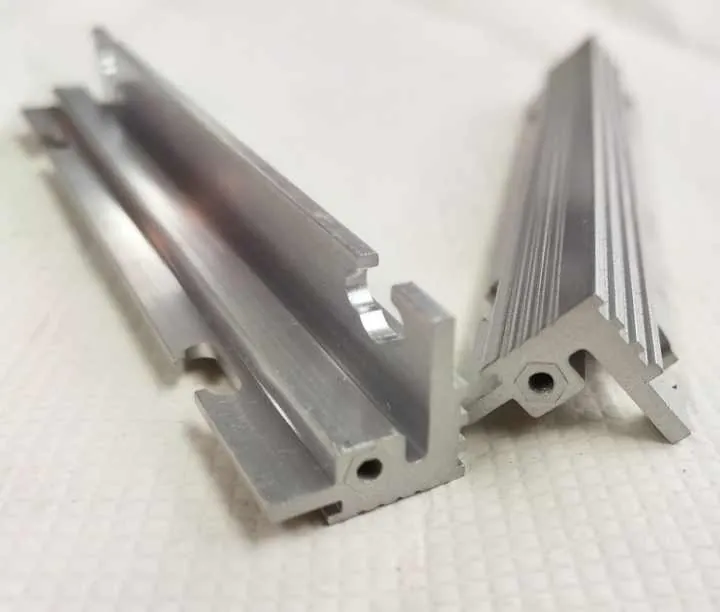Aluminum Profile Frame Can Bring You More Value?

Struggling to find value in your construction or design project? An aluminum profile frame might be the game-changer you need.
Aluminum profile frames offer durability, lightweight design, and aesthetic versatility, making them a valuable addition to both construction and design projects.
Choosing the right material for your project’s success is crucial, and understanding the benefits of aluminum can guide you in maximizing your design’s potential.
What are aluminum frame benefits?
Tired of heavy and cumbersome materials for your projects? Aluminum frames provide a sleek and efficient alternative.
Aluminum frames are lightweight, resistant to corrosion, and offer high recyclability, ensuring sustainable and effective usage across multiple applications and industries.

Exploring Aluminum Frame Advantages
Aluminum frames offer a plethora of benefits that are often overlooked. Understanding why aluminum is a preferred choice involves digging deep into its material properties and the advantages they confer in practical applications.
Lightweight Yet Strong
One critical benefit of aluminum is its strength-to-weight ratio. This property makes it an ideal material in aviation, automotive industries, and even in lightweight structures like exhibition stands and residential construction. Compared to steel, aluminum’s light weight does not compromise its durability and strength.
Corrosion Resistance
Unlike other metals, aluminum naturally enhances its resistance to rust and corrosion through a protective oxide layer. This means it maintains its structural integrity and appearance over time, which is crucial for outdoor or high moisture environments.
| Material | Density (g/cm³) | Corrosion Resistance |
|---|---|---|
| Aluminum | 2.7 | Excellent |
| Steel | 7.8 | Poor (without treatment) |
Recyclability
Sustainability is at the forefront of modern construction and design. Aluminum is 100% recyclable without degradation of its properties, aligning with eco-friendly initiatives and reducing environmental footprint.
| Characteristic | Aluminum | Steel |
|---|---|---|
| Recyclability | 100% | Varies |
| Environmental Impact | Low | High |
Aluminum frames are heavier than steel frames.False
Aluminum has a much lower density than steel, making it lighter.
How does frame increase value?
Struggling to increase property value through material choices? Aluminum frames might be the solution you’re missing.
Using aluminum frames enhances the structural integrity, aesthetics, and sustainability credentials of a project, thereby boosting its overall value.
Economic and Aesthetic Synergy
The economic benefits of aluminum frames go hand in hand with their aesthetic offerings. Aluminum enhances the marketability of a building project by contributing to a modern and appealing look while also cutting costs through durability and low maintenance requirements.
Enhancing Market Appeal
Modern trends demand sleek and minimalist designs, and aluminum delivers on this front. Its versatility allows for a range of finishes and colors, enabling designers to achieve specific looks while benefiting from inherent material strengths.
Cost Efficiency
While initial costs might seem higher, the long-term savings from durability, minimal maintenance, and energy efficiency make aluminum frames an economically sound choice. It’s not just about upfront costs but considering the full lifecycle value.
The adaptability of aluminum frames for insulation purposes also plays a pivotal role in energy efficiency, which is increasingly important for reducing overall building operation costs.
Aluminum frames do not contribute to energy efficiency.False
Aluminum frames can be designed to enhance insulation, contributing to better energy efficiency.
Where are aluminum frames used?
Confused about the range of applications for aluminum frames? Let’s uncover their diverse uses.
Aluminum frames are widely used across architectural designs, transport industries, and consumer goods due to their versatility, strength, and lightweight nature.
Diverse Application Spectrum
The usage range of aluminum frames is incredibly broad. Whether you’re dealing with architectural projects or mass transportation systems, understanding where aluminum fits can help in making informed material decisions.
In Architecture
Aluminum frames are prominent in window and door construction. Their corrosion resistance and modern aesthetics perfectly fit the need for durability and appealing designs in building facades.
In Transportation
Automobile and aerospace industries heavily rely on aluminum for weight reduction, increasing fuel efficiency without compromising safety standards.
In various consumer goods, from furniture to electronics, aluminum continues to shape product designs by providing sleek and functional components.
Aluminum frames are rarely used in the automotive industry.False
Aluminum is widely used in the automotive industry for its weight and strength benefits.
Why choose aluminum frames?
Doubtful about material choices? Choosing aluminum frames could be the most strategic decision for your projects.
Aluminum frames are chosen for their durability, sustainability, and the aesthetic flexibility they offer, making them ideal for various contemporary applications.
Considerations for Material Selection
Choosing the right material impacts both the performance and appearance of any project. Evaluating materials based on specific criteria can ensure optimal results.
Durability and Maintenance
Aluminum’s inherent strength offers a lower lifecycle cost due despite potential higher initial investments. Light maintenance requirements further add to its cost-efficiency over time.
Sustainability Factor
Given the recyclability of aluminum, its choice often aligns with sustainable development goals, which are important in building certifications and consumer preferences.
Aluminum frames require high maintenance due to corrosion.False
No explanation available.
Conclusion
Aluminum frames really change the game by offering durability, flexibility, and environmental benefits. They’re not just energy-efficient but also stylish, transforming projects sustainably and economically.



